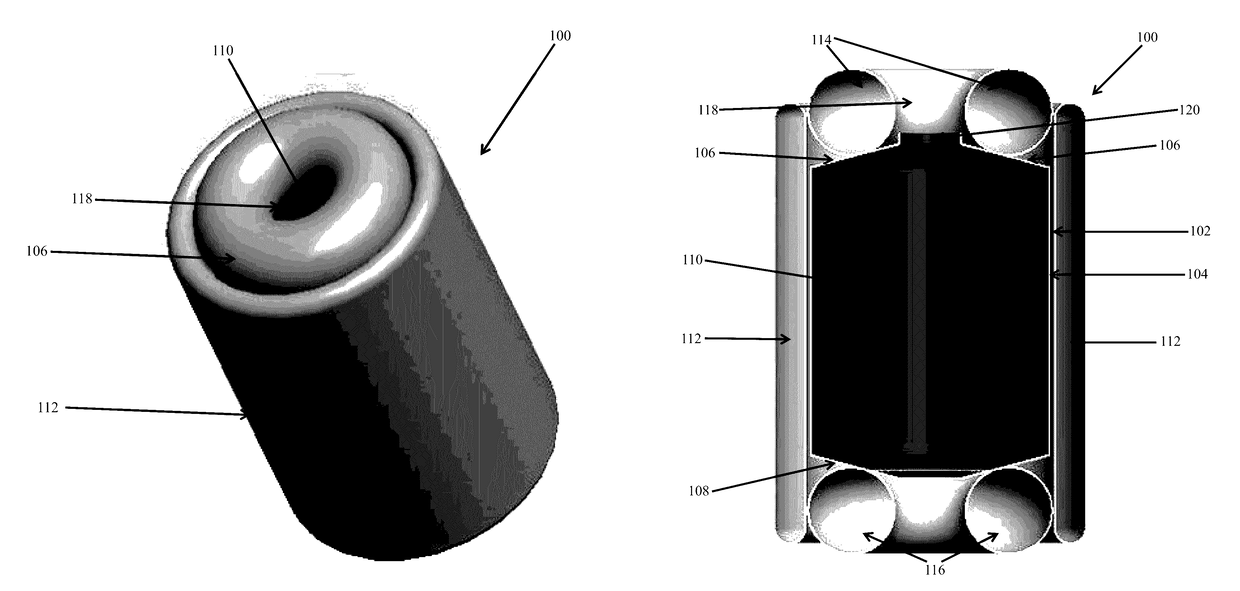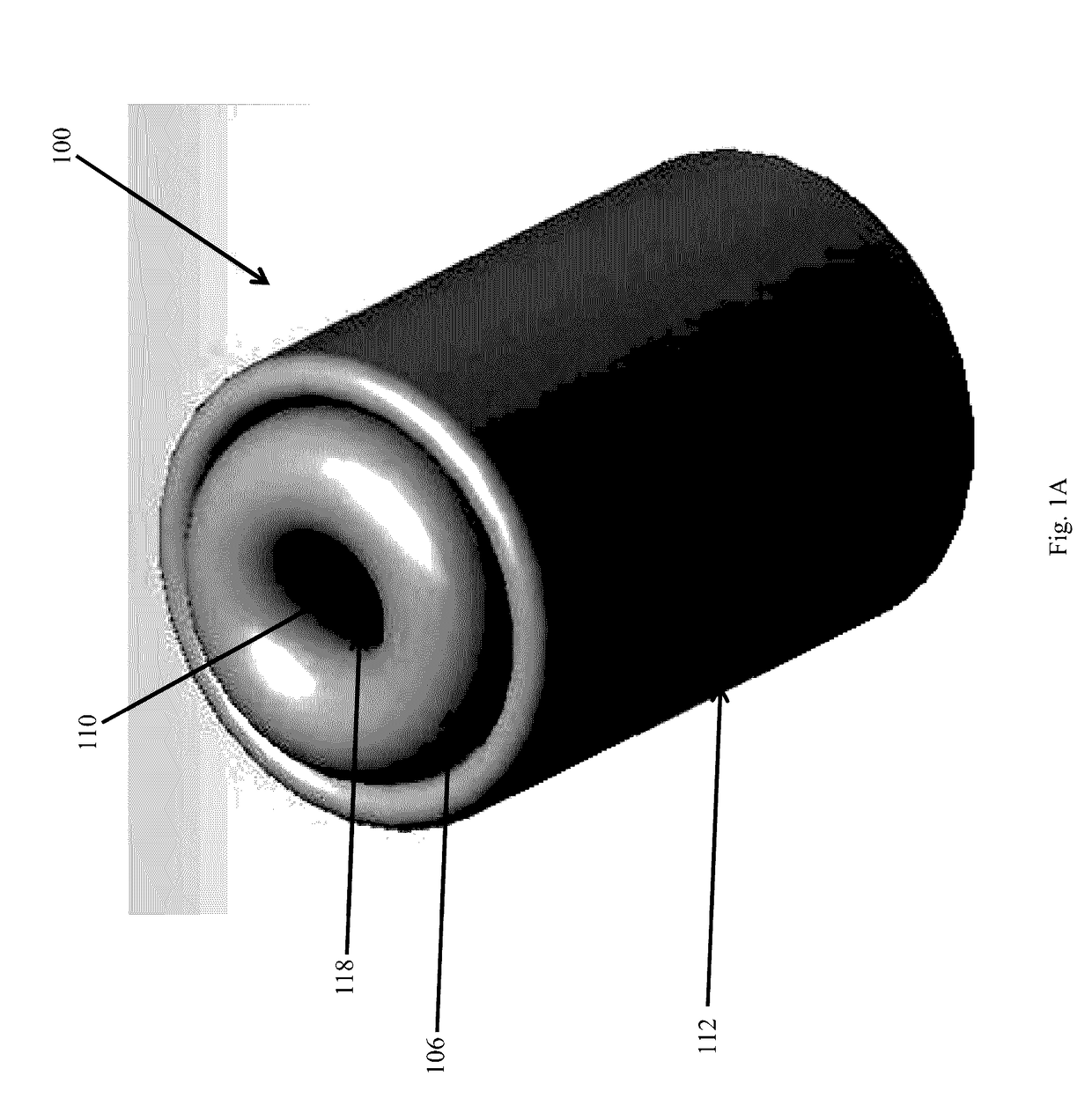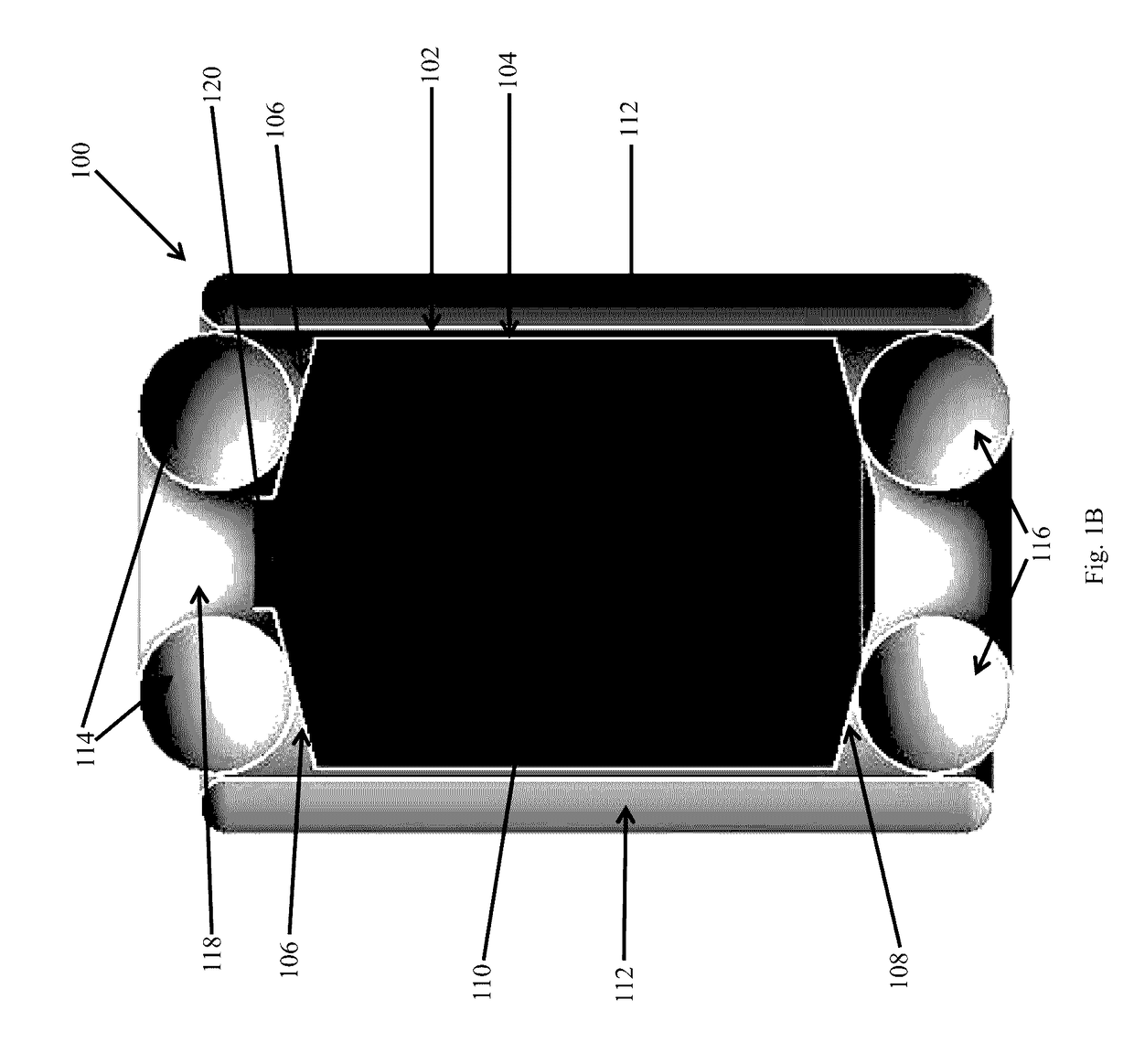Cryogenic hydrogen radiation shield for human spaceflight
a hydrogen radiation shield and spaceflight technology, applied in the direction of cosmonautic thermal protection, nuclear elements, cosmonautic vehicles, etc., can solve the problems of radiation doses that are dangerous to astronaut health and even survivability, radiation can be just as damaging, and secondary radiation can be significan
- Summary
- Abstract
- Description
- Claims
- Application Information
AI Technical Summary
Benefits of technology
Problems solved by technology
Method used
Image
Examples
Embodiment Construction
[0016]Studies have shown there will be a need to protect astronauts during, for example, interplanetary missions (e.g., Mars) from deep space radiation with an annual allowable radiation dose less than 500 mSv. For a typical crew module that is 4 meter in diameter and 8 meter in length, the mass of polyethylene radiation shielding required would be more than 17,500 kg at a needed shielding a real density of approximately 140 kg / m2. By comparison, the requirement for hydrogen shielding is 70 kg / m2, much less than polyethylene shielding. Vapor hydrogen has a very low density, and the storage tank can't fit into a 5 meter payload fairing for a rocket that might launch the crew module. Liquid and solid hydrogen have much higher densities and are preferable to vapor hydrogen for the purpose of packaging the required hydrogen areal density in a reasonable volume. For example, the thickness of solid hydrogen needed to shield astronauts is about 0.43 m and the combined diameter of the crew ...
PUM
 Login to View More
Login to View More Abstract
Description
Claims
Application Information
 Login to View More
Login to View More - R&D
- Intellectual Property
- Life Sciences
- Materials
- Tech Scout
- Unparalleled Data Quality
- Higher Quality Content
- 60% Fewer Hallucinations
Browse by: Latest US Patents, China's latest patents, Technical Efficacy Thesaurus, Application Domain, Technology Topic, Popular Technical Reports.
© 2025 PatSnap. All rights reserved.Legal|Privacy policy|Modern Slavery Act Transparency Statement|Sitemap|About US| Contact US: help@patsnap.com



